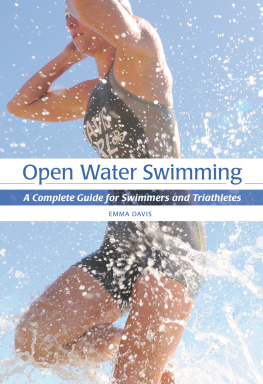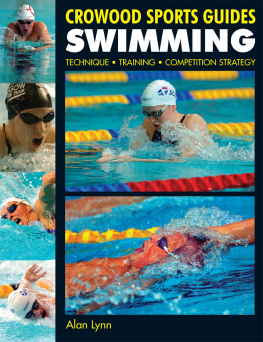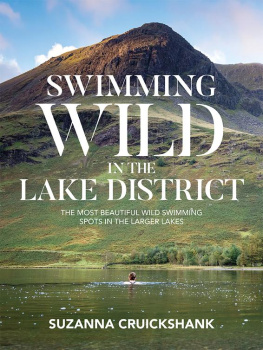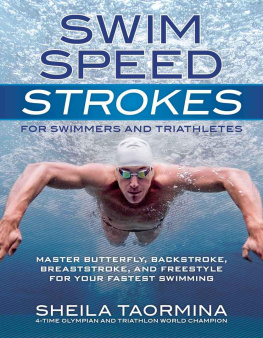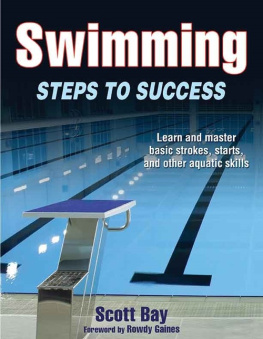Open Water Swimming
A Complete Guide for Swimmers and Triathletes

INDEX
A
acclimatization
cold water
warm water
aerobic
allergy
anaerobic power
anaphylactic shock
anti-chafing cream
anti-fog solution
B
balance
band
swim
towelly
blue green algae
boats
body surf
breastrokers knee
MCL sprain
buoy
pull
buoyancy
C
caffeine
carbohydrate
complex
Channel swim
competition
core stability
cortisol
cramp
currents , 35
D
Dardanelles
doggy paddle
dolphin dive
drafting
on feet
on hip
E
elastic bungee
electrolyte
drink
endurance
environment agency
essential fatty acid
exit
F
fatigue
feeding
FINA
fins
fish
jelly
G
goal
goggles
leak
lost
glycogen
H
hand paddles
heat pad
Hellespont
hydration
I
injury
iron
isotonic
drink
J
jellyfish ( see fish)
K
kayak ( see boat)
kickboard
kitbag
L
lanolin
law
lightning
M
magnesium
muscle
glycogen ( see glycogen)
tonic
N
navigable water
neoprene hat
nerve synapse
nutrition
O
Olympic games
overload
P
pack swimming
paddle board ( see boat)
potassium
protein
psychology
R
rash vest
refractometer
reservoir
reverse zip
rotator cuff
rough water
S
safety
salt water
Schermanns kyphosis
serotonin
shorts
drag
neoprene
shoulder
stabilizing complex ,
swimmers
sighting
silicone ear plugs
spondylolisthesis
spondylolysis
sportsmanship
starts
beach
deep water
dive
pontoon
stretch cord ( see elastic bungee)
protocol
static and dynamic
swim drills
swim snorkel
swim suit regulations
T
tides
rip
transisition
trespassing
triathlon
Olympic distance
U
urine
V
visualization
W
wading
warm down
warm up
warming cream
weather
weeds
Weills disease
wetsuit
size , 16
ACKNOWLEDGEMENTS
There are many people without whom this book would not have been written, and I would like to take this opportunity to express my thanks to as many of them as possible. First of all, thank you to my amazing friend and photographer Kirsty Nethercott, my swimming and rehabilitation models Matthew Langston and Luke Francis, computer expert Alex Todd for his help with the anatomical body diagrams, to my two very special proof readers, Ann and Phil, who never tired of re-reading, and to all those at Hampton Pool, Open Water Swim and Liquid Leisure.
Open Water Swimming
A Complete Guide for Swimmers and Triathletes
EMMA DAVIS

This e-book first published in 2013 by
The Crowood Press Ltd
Ramsbury, Marlborough
Wiltshire SN8 2HR
www.crowood.com
Emma Davis 2013
All rights reserved. No part of this publication may be reproduced or transmitted in any form or by any means, electronic or mechanical, including photocopy, recording, or any information storage and retrieval system, without permission in writing from the publishers.
British Library Cataloguing-in-Publication Data
A catalogue record for this book is available from the British Library.
ISBN 978 1 84797 610 9
CHAPTER 1
INTRODUCTION TO OPEN WATER SWIMMING
Quite simply, open water swimming is swimming in open water: that is, swimming outside in lakes, rivers, canals, reservoirs or the sea. For those who are adrenalin junkies, open water swimming can encompass so-called extreme swimming, the riskiest and potentially the most dangerous form of swimming there is.
The History of Open Water Swimming
Open water swimming as a sport dates back to 1810 when Lord Byron swam from Europe to Asia across the Hellespont, or the Dardanelles as we now call it. At the first modern Olympic Games in 1896 the swimming event was held in open water, but as the participating nations became wealthier and more sophisticated, the number of public swimming pools gradually increased, and so it became customary to swim in a pool. This was mirrored in the events of the Olympic Games, as the open water swimming event was eventually replaced by pool swimming, and the number of events proliferated.
But we have moved full circle, because at the Sydney Olympic Games in the year 2000 the triathlon made its first appearance, an event involving a 1,500m swim in Sydney harbour; and in 2008 at the Beijing Olympic Games, open water swimming was back as a competition in its own right, as a 10km race. The General FINA World Championships now include 5, 10 and 25km open water swims, and open water swimming is currently experiencing a real explosion in both mass participation and performance level competition.
We will now explore some of the reasons why you should follow suit and take up open water swimming.
The Benefits of Open Water Swimming
The most important reason for taking up open water swimming, as with any sport, is for pure enjoyment. The feeling of being suspended is so special: in the water your body feels lighter, more elegant and free it is a whole other world. In the water most of our senses are greatly restricted eyesight is blurred, hearing is minimal, and there isnt anything to smell or taste and because of this, the one sense that we have left, touch, is heightened. Thus in the water we feel everything to a much greater degree: the way the water pushes back on our hand and arm as we pull ourselves through it; how the hairs on our legs restrict its flow; the splash of it on our face; even the nastiness of it going up our nose. This is one of the few situations where you are able to experience the sense of touch to such an extent.
Swimming indoors is pleasure enough, but why not head outside to nature? No more the boredom of swimming up and down the pool, endlessly counting the number of lengths you have swum; and also no more all the nasty chemicals required to keep the swimming pool fresh and sanitary you no longer smell of chlorine for days after you swim, the air is fresh and clean, and there is so much to see! Why stare at a black line when you could be following a ghost carp or even swimming alongside a dolphin?
Swimming is also one of the most body-friendly forms of exercise. It is impact free and therefore kind to joints and bones, and is an extremely good source of whole body exercise, facilitating muscular contractions that are neglected during other forms of exercise. Even greater benefits can be experienced in cardiovascular efficiency, joint flexibility and muscular condition. The breathing muscles in particular the diaphragm, and the outer and intercostal muscles are targeted, and there is really no other form of exercise that so effectively hits these muscle groups. Consequently swimming is an ideal form of exercise for people with breathing conditions such as recurrent bronchitis or asthma. All in all, the improvements to health and the individuals quality of life can be felt almost instantaneously.
These bodily changes occur when just swimming in a pool, but when open water swimming we enter into a whole new dimension of the sport and will encounter even greater advantages. We will experience other factors such as currents, waves and the wind, three elements that add to the challenge the effort feels harder, with the wind and the currents pushing us back and the waves crashing down on us or we may suddenly come across a buoy we need to navigate around, or a swimmer to avoid or overtake.
Next page
